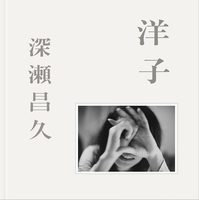$46.96
預訂中,購買後立即進貨
一般需等候約 25 天
- Hardcover
- 160 pages
- 211 × 226 × 18 mm
- ISBN 9784865411591
- Dec 2022
"Walking through the city, there are times that I feel as if I am the one being stared at by the objects around me, capturing my attention. Ordinary residential areas and restaurants, hanging laundry, posters, graves, Japanese flags, mannequins. Various things that people have left behind. Ashtrays and flowerpots, who can only tell us that someone was definitely there but now is here no longer, rapidly reveal the silhouettes of these people. As if doing as I am told with a slight feeling of unease, I quietly pull out my camera and take photographs. Looking at what is fixed in the photographs, what can be seen is still only a modest record of what has been captured. However, in the details of a supposedly familiar landscape, one discovers layers upon layers of brutal traces of the past, a history of political choices and division being constantly imposed on the inhabitants, and various symbols and images. A photograph is always presented as a small fragment before it becomes a part of a collective. There is nothing in a photograph that cannot be seen by the eye. I cannot help but think that within each photo there are multiple connecting pathways to the time when these events occurred. It is like the time I spent visiting a place, or like making eye contact with someone whose face and name I do not know. Or like the fact that there were days that trickled by in that place like small grains, similar to what I am living right now. It quietly demonstrates that the landscape, as well as you and I who are looking at it, will also disappear someday. Yet, no matter how many times the landscape is repainted, the scars that grazed this place will never disappear, no matter how much they are wiped or scrubbed at, and they will continue to stand there firmly and motionlessly in silence. Deeply ingrained memories are always wavering between the open gap between objects."
Exracted from the afterwords
by Sayaka Uehara
Sayaka Uehara
Born in Okinawa in 1993. Graduated from Tokyo Zokei University in 2016. Received Zokei Award 2015 for her graduation work "White Season" in which she tried to capture Okinawan everyday scenery as an extension of someone's life, not the existing Okinawa image by symbolic interpretation as something to be consumed. Went back to Okinawa and continued shooting after graduation.In 2019, Chosen to "Okinawa Photography Typhoon: From North From South", project to discover and present young photographers by PHOTONESIA OKINAWA, and she had an exhibition "The Others" both in Okinawa and Tokyo (Canon Open Gallery1, INTERFACE-Shomei Tomatsu Lab.,). The exhibition projected the moments that accidentally touched someone's time in familiar landscape and the history and problems of Okinawa lying in even very small living spaces, which including memories and scars appear in landscape, as well as a cross-section of the layers of time that a place holds. In 2020, she won The 36th Higashikawa Awards for The New Photographer for the same work, and in 2021, she held the exhibition "The Others 2020-2021," a continuation of the series (IG Photo Gallery).









































